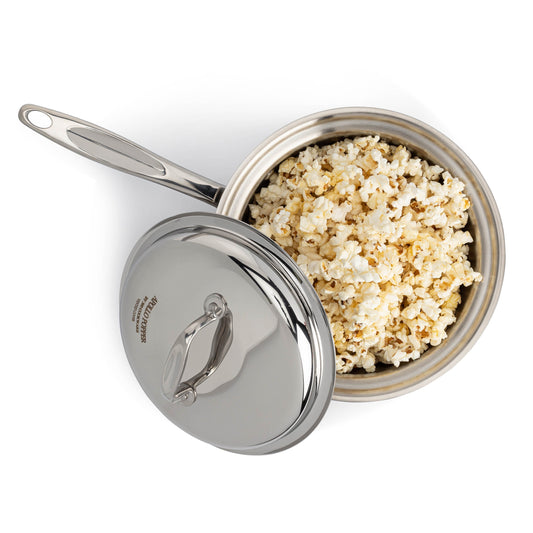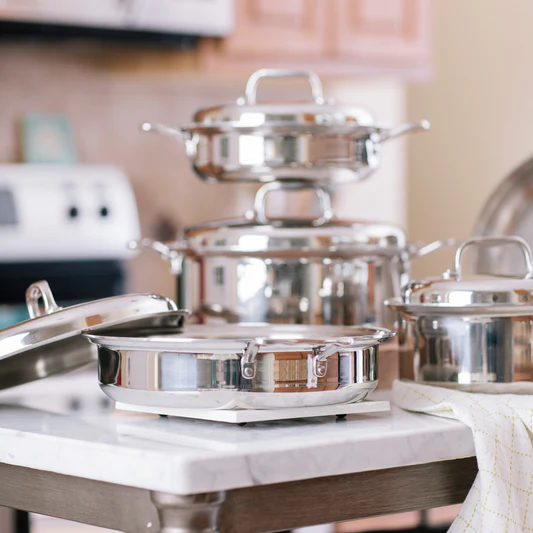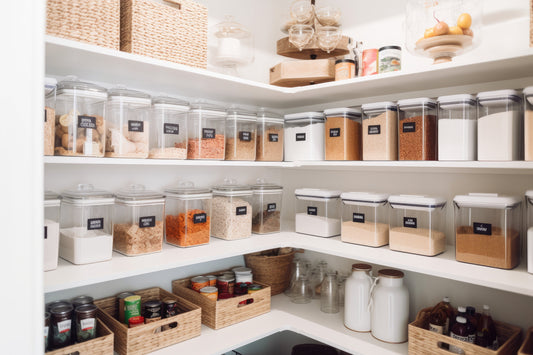Over the last few years, we’ve all suffered from the sticker shock of rising inflation. While things are settling down now, there’s still been a steep increase in the cost of eating out. Even a simple fast food dinner for four is starting to be an expensive luxury that can make you think twice about going to a restaurant or ordering in! Perhaps it’s time to start developing a repertoire of tasty, inexpensive meals that you can prepare yourself, as well as investing in quality cookware that will guarantee that your food is as healthy as possible.
The True Cost of Eating Out
Eating out is still a popular option for many Americans, but the average cost of eating out per month might shock you. A 2023 survey shows that Americans dine out three times a month, at an average cost of $166 per person per month. Ordering in is even more popular, at an average of 4.5 times per month, but that gets expensive too, especially once delivery fees are factored in. One study found that the average delivery order cost from $31 to $36 in 2022. That’s an extra $150 or so a month per person just for ordering in, and combined with dining out, you’re looking at $300 or so per person per month.
Now multiply those numbers by four, and you get an average eating out cost per month for a family of four that can easily add up to a thousand dollars or even more. It’s worth re-thinking your spending priorities and focusing on creating meals at home for your whole family to enjoy.
The Benefits of Cooking at Home
Let’s start with the benefits of cooking from home. There are several advantages to preparing more of your own meals:
- Without the additional costs of labor and everything else needed to keep a restaurant in business, all you will have to pay is for the ingredients!
- When you’re cooking your own meals, you can have complete confidence that you’re using the best ingredients, prepared in the healthiest way.
- You can throw together a quick meal for you and your family in less time than it takes to head out to a restaurant or wait for the delivery guy to turn up on your doorstep.
- Rising gas costs add even more to the cost of driving to a restaurant
How to Start Cooking at Home
So, you’ve decided that it’s time to start saving money and enjoying more home-cooked meals! If you’re the sort of person who depends on the microwave and frozen dinners to get a quick meal on the table, you might be intimidated at making the change to healthy, delicious meals cooked from scratch. Let’s go through the essentials to set up your kitchen for success!
Equipping the Kitchen
Don’t be overwhelmed by the Instagram posts of cooks with kitchens chock full of every imaginable kitchen gadget. The good news is that you can get started on a personal culinary journey with a few key pieces, and add more as you feel the need.
Start with a good chopping board and a few sharp knives, including a paring knife and a chef’s knife. Once you’ve had some practice chopping, slicing, and dicing, you’ll be able to prep foods without needing a food processor.
For stovetop cooking, start with a few basic pots and pans. One each of two, four, and six quart saucepans with lids, as well as a large and small fry pan, will take care of most cooking needs. Add a couple of casserole dishes for the oven, as well as a half sheet pan. You’ll also need measuring cups and spoons, as well as a whisk, spatulas, tongs, and some mixing bowls in various sizes.
That’s a great starter set for your home-cooking kitchen! And remember, you’re going to be saving thousands of dollars a year in restaurant meals, so budget some of those savings towards buying high-quality stainless steel equipment. Not only will this improve your cooking experience, but will save you even more money over time, as good cookware won’t need to be replaced every year or so!
Stocking the Pantry
There’s little point in setting up your kitchen without filling the pantry, refrigerator, and freezer with ingredients for your home-cooked meals. You won’t want to have to run out to the store whenever the urge to cook hits. And if currently your cupboards have little else but sauce packets from takeout meals, you’ll need to do a proper shopping trip before you can get started.
Dry goods such as rice, pasta, and lentils can be stored in cupboards in their original packaging, but decanting them into glass jars will keep them safer from any pests that may find them attractive. Also, keep a stock of canned goods such as beans, soups, broths and sauces to help you quickly put a meal together. Canned tuna and chicken are also quick and easy protein-rich ingredients.
Keep vegetables such as corn, peas, and beans, and fruit such as strawberries or blueberries in the freezer. They not only save you prep time, but they’re also picked and processed at their peak, preserving their nutritional benefits.
Stock up on condiments such as vinegar, ketchup, mustard, and herbs and spices including chili powder, cinnamon, ginger, garlic powder, rosemary, oregano, and thyme. You should have olive oil and an all-purpose oil such as canola or sunflower seed.
You will need to pick up fresh fruit and vegetables, meat, fish, cheese, bread, and milk on a weekly basis. Buy small quantities until you get a feel for how quickly they get used up, to cut down on food waste.
Finding the Recipes
You’ve got your equipment and your ingredients, so now all you need are the recipes to make some great home-cooked meals! You can never go wrong with cookbook classics like The Joy of Cooking, It’s always good to have some cookbooks like the 360 Cookbook - Vapor Cooks Better! on your shelf, but you also can use online resources to find an endless array of delicious dishes. Whether you’re scrolling through Pinterest or Instagram and happen across something that looks good, or use some ingredients that you have on hand as Google search terms, you will have no trouble locating lots of great recipes.
One of the great things about cooking for yourself and your family is that you can tailor your menus to suit individual tastes much better than any restaurant. Start with easy meals that don’t require a lot of expertise, and as you gain experience and confidence in your skills, you can start to expand your culinary horizons!
While occasional restaurant outings are a wonderful experience, they’ll be all the more special when they’re a treat, and once you’re saving money every month by cooking at home, you will be able to enjoy them even more!





